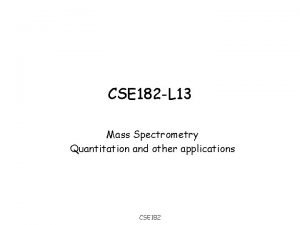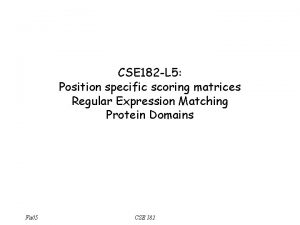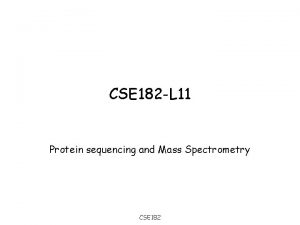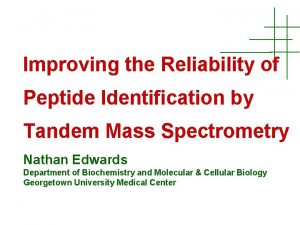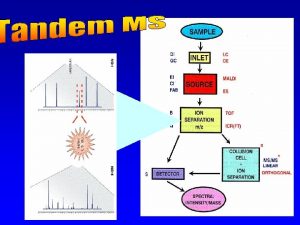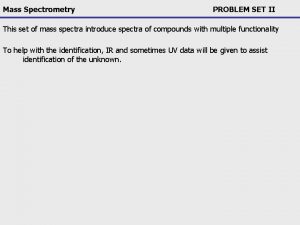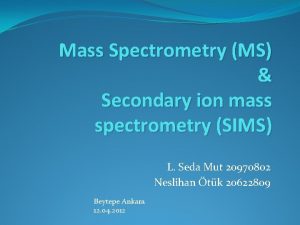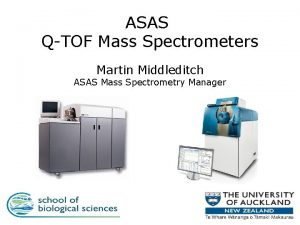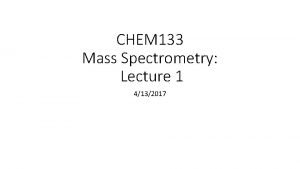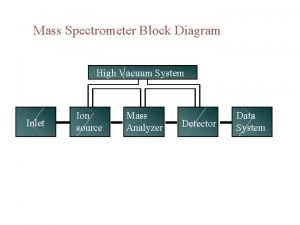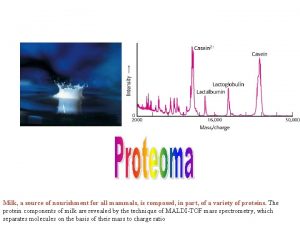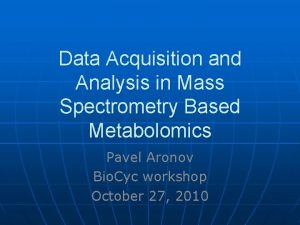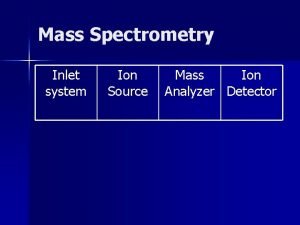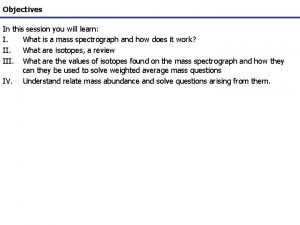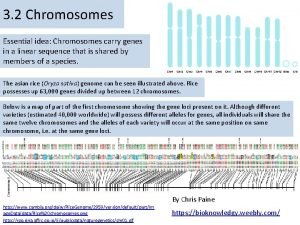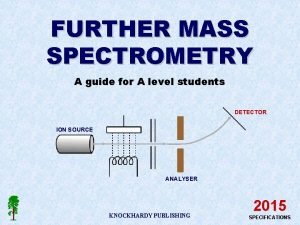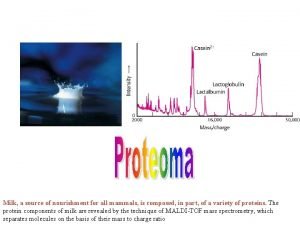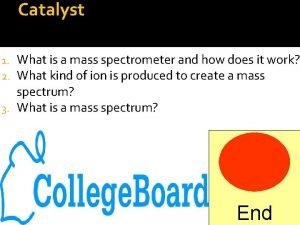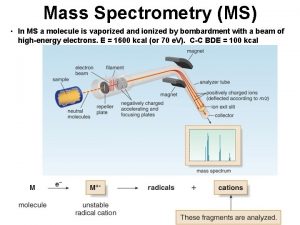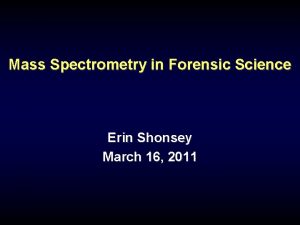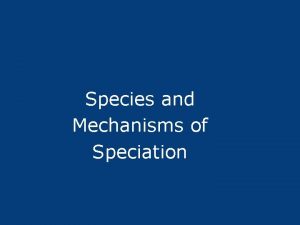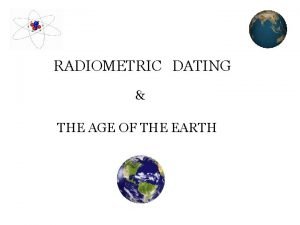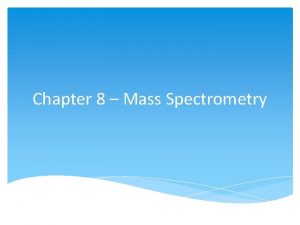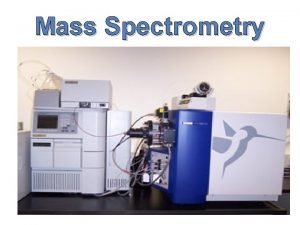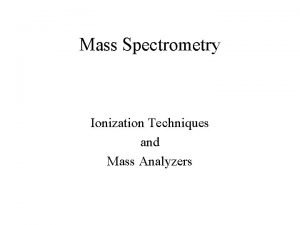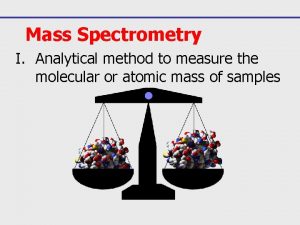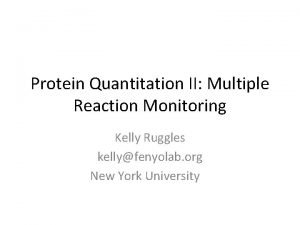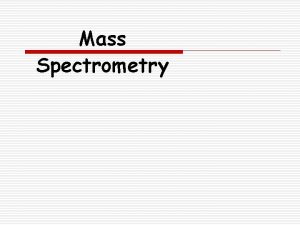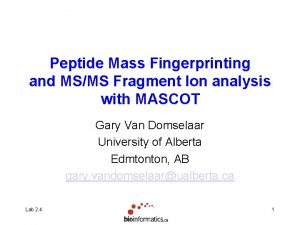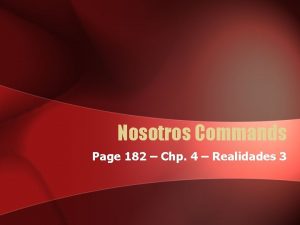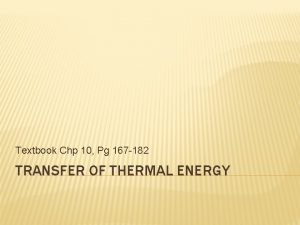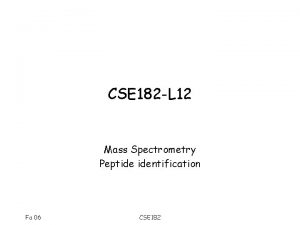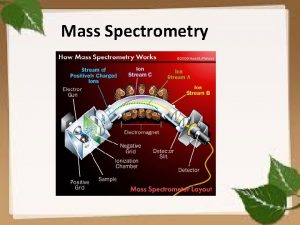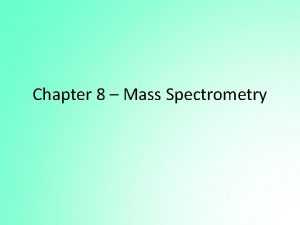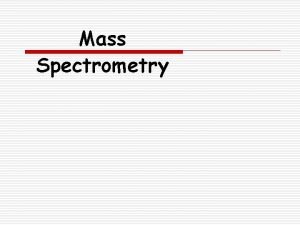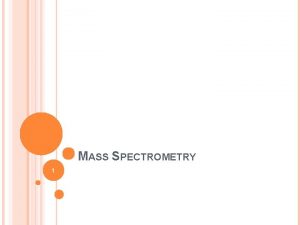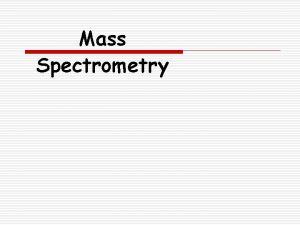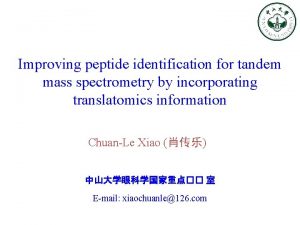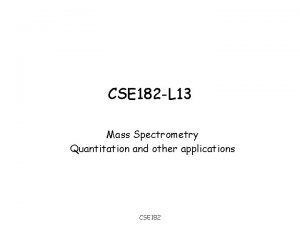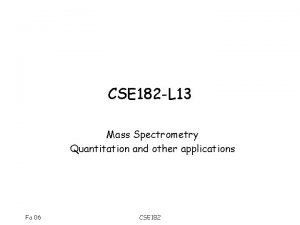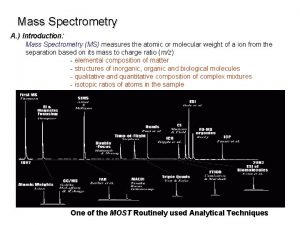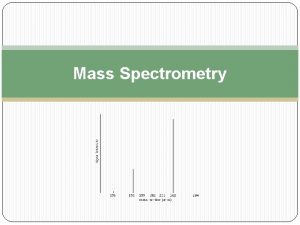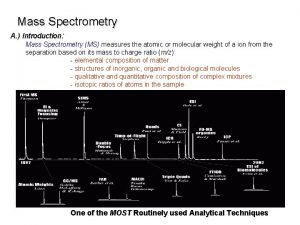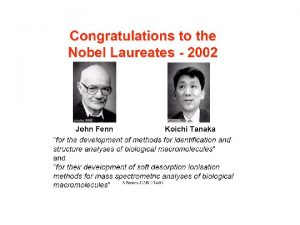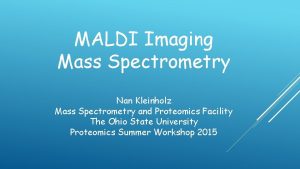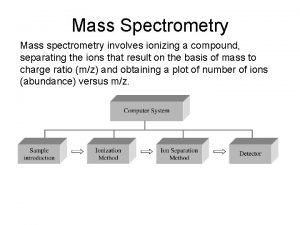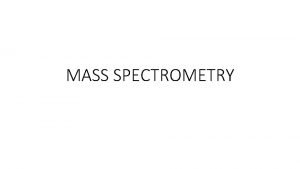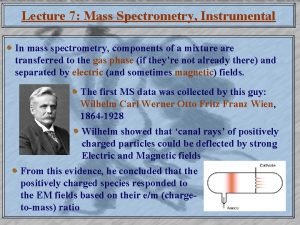CSE 182 L 12 Mass Spectrometry Peptide identification






















![D. P. forbidden pairs • Consider all pairs u, v – m[u] <= M/2, D. P. forbidden pairs • Consider all pairs u, v – m[u] <= M/2,](https://slidetodoc.com/presentation_image/28c55a46df6fb1f63522024e94b20f83/image-23.jpg)













- Slides: 36

CSE 182 -L 12 Mass Spectrometry Peptide identification CSE 182

General isotope computation • Definition: – Let pi, a be the abundance of the isotope with mass i Da above the least mass – Ex: P 0, C : abundance of C-12, P 2, O: O-18 etc. – Let Na denote the number of atome of aminoacid a in the sample. • Goal: compute the heights of the isotopic peaks. Specifically, compute Pi= Prob{M+i}, for i=0, 1, 2… CSE 182

Characteristic polynomial • We define the characteristic polynomial of a peptide as follows: • • (x) is a concise representation of the isotope profile CSE 182

Characteristic polynomial computation • Suppose carbon was the only atom with an isotope C 13. CSE 182

General isotope computation • • Definition: – Let pi, a be the abundance of the isotope with mass i Da above the least mass – Ex: P 0, C : abundance of C-12, P 2, O: O-18 etc. Characteristic polynomial • Prob{M+i}: coefficient of xi in (x) (a binomial convolution) CSE 182

Isotopic Profile Application • • • In Dx. MS, hydrogen atoms are exchanged with deuterium The rate of exchange indicates how buried the peptide is (in folded state) Consider the observed characteristic polynomial of the isotope profile t 1, t 2, at various time points. Then The estimates of p 1, H can be obtained by a deconvolution Such estimates at various time points should give the rate of incorporation of Deuterium, and therefore, the accessibility. Not in Syllabus CSE 182

Quiz § How can you determine the charge on a peptide? § Difference between the first and second isotope peak is 1/Z § Proposal: §Given a mass, predict a composition, and the isotopic profile § Do a ‘goodness of fit’ test to isolate the peaks corresponding to the isotope § Compute the difference CSE 182

Ion mass computations • Amino-acids are linked into peptide chains, by forming peptide bonds • Residue mass – Res. Mass(aa) = Mol. Mass(aa)18 – (loss of water) CSE 182

Peptide chains • Mol. Mass(SGFAL) = res. M(S)+…res(L)+18 CSE 182

M/Z values for b/y-ions Ionized Peptide H+ R NH 2 -CH-CO-………-NH-CH-COOH R • Singly charged b-ion = Res. Mass(prefix) + 1 R NH+2 -CH-CO-NH-CH-CO R • Singly charged y-ion= Res. Mass(suffix)+18+1 • What if the ions have higher units of charge? CSE 182 R NH+3 -CH-CO-NH-CH-COOH R

De novo interpretation • Given a spectrum (a collection of b-y ions), compute the peptide that generated the spectrum. • A database of peptides is not given! • Useful? – Many genomes have not been sequenced – Tagging/filtering – PTMs CSE 182

De Novo Interpretation: Example 0 88 S 420 145 G 333 274 E 276 402 b-ions K 147 0 y-ions Ion Offsets b=P+1 y=S+19=M-P+19 y 2 y 1 b 2 100 200 300 M/Z CSE 182 400 500

Computing possible prefixes • We know the parent mass M=401. • Consider a mass value 88 • Assume that it is a b-ion, or a y-ion • If b-ion, it corresponds to a prefix of the peptide with residue mass 88 -1 = 87. • If y-ion, y=M-P+19. – Therefore the prefix has mass • P=M-y+19= 401 -88+19=332 • Compute all possible Prefix Residue Masses (PRM) for all ions. CSE 182

Putative Prefix Masses Prefix Mass M=401 b y 88 87 332 145 144 275 147 146 273 276 275 144 S 0 G E K 87 144 273 401 CSE 182 • Only a subset of the prefix masses are correct. • The correct mass values form a ladder of amino-acid residues

Spectral Graph 87 G 144 • Each prefix residue mass (PRM) corresponds to a node. • Two nodes are connected by an edge if the mass difference is a residue mass. • A path in the graph is a de novo interpretation of the spectrum CSE 182

Spectral Graph • • Each peak, when assigned to a prefix/suffix ion type generates a unique prefix residue mass. Spectral graph: – Each node u defines a putative prefix residue M(u). – (u, v) in E if M(v)-M(u) is the residue mass of an a. a. (tag) or 0. – Paths in the spectral graph correspond to a interpretation 0 87 100 S 273275 144 146 G 200 332 300 E K CSE 182 401

Re-defining de novo interpretation • Find a subset of nodes in spectral graph s. t. – 0, M are included – Each peak contributes at most one node (interpretation)(*) – Each adjacent pair (when sorted by mass) is connected by an edge (valid residue mass) – An appropriate objective function (ex: the number of peaks interpreted) is maximized G 87 0 87 273275 144 146 100 S 144 G 200 332 300 E K CSE 182 401

Two problems • Too many nodes. – Only a small fraction are correspond to b/y ions (leading to true PRMs) (learning problem) • Multiple Interpretations – Even if the b/y ions were correctly predicted, each peak generates multiple possibilities, only one of which is correct. We need to find a path that uses each peak only once (algorithmic problem). – In general, the forbidden pairs problem is NP-hard 0 87 100 S 273275 144 146 G 200 332 300 E K CSE 182 401

Too many nodes • We will use other properties to decide if a peak is a b-y peak or not. • For now, assume that (u) is a score function for a peak u being a b-y ion. CSE 182

Multiple Interpretation • Each peak generates multiple possibilities, only one of which is correct. We need to find a path that uses each peak only once (algorithmic problem). • In general, the forbidden pairs problem is NP-hard • However, The b, y ions have a special noninterleaving property • Consider pairs (b 1, y 1), (b 2, y 2) – If (b 1 < b 2), then y 1 > y 2 CSE 182

Non-Intersecting Forbidden pairs 0 87 S • • 100 G 200 300 E 332 400 K If we consider only b, y ions, ‘forbidden’ node pairs are non-intersecting, The de novo problem can be solved efficiently using a dynamic programming technique. CSE 182

The forbidden pairs method • • • Sort the PRMs according to increasing mass values. For each node u, f(u) represents the forbidden pair Let m(u) denote the mass value of the PRM. Let (u) denote the score of u Objective: Find a path of maximum score with no forbidden pairs. 0 87 100 300 200 332 f(u) u CSE 182 400
![D P forbidden pairs Consider all pairs u v mu M2 D. P. forbidden pairs • Consider all pairs u, v – m[u] <= M/2,](https://slidetodoc.com/presentation_image/28c55a46df6fb1f63522024e94b20f83/image-23.jpg)
D. P. forbidden pairs • Consider all pairs u, v – m[u] <= M/2, m[v] >M/2 • Define S(u, v) as the best score of a forbidden pair path from – 0 ->u, and v->M • Is it sufficient to compute S(u, v) for all u, v? 0 87 100 300 200 u 332 400 v CSE 182

D. P. forbidden pairs • Note that the best interpretation is given by 0 87 100 300 200 u v CSE 182 332 400

D. P. forbidden pairs • Note that we have one of two cases. • Case 1. Either u > f(v) (and f(u) < v) 2. Or, u < f(v) (and f(u) > v) – Extend u, do not touch f(v) 0 100 f(v) u 300 200 CSE 182 400 v

The complete algorithm for all u /*increasing mass values from 0 to M/2 */ for all v /*decreasing mass values from M to M/2 */ if (u < f[v]) else if (u > f[v]) If (u, v) E /*max. I is the score of the best interpretation*/ max. I = max {max. I, S[u, v]} CSE 182

De Novo: Second issue • Given only b, y ions, a forbidden pairs path will solve the problem. • However, recall that there are MANY other ion types. – – Typical length of peptide: 15 Typical # peaks? 50 -150? #b/y ions? Most ions are “Other” • a ions, neutral losses, isotopic peaks…. CSE 182

De novo: Weighting nodes in Spectrum Graph • Factors determining if the ion is b or y – Intensity (A large fraction of the most intense peaks are b or y) – Support ions – Isotopic peaks CSE 182

De novo: Weighting nodes • A probabilistic network to model support ions (Pepnovo) CSE 182

De Novo Interpretation Summary • The main challenge is to separate b/y ions from everything else (weighting nodes), and separating the prefix ions from the suffix ions (Forbidden Pairs). • As always, the abstract idea must be supplemented with many details. – – Noise peaks, incomplete fragmentation In reality, a PRM is first scored on its likelihood of being correct, and the forbidden pair method is applied subsequently. • In spite of these algorithms, de novo identification remains an error-prone process. When the peptide is in the database, db search is the method of choice. CSE 182

The dynamic nature of the cell • • • CSE 182 The proteome of the cell is changing Various extra-cellular, and other signals activate pathways of proteins. A key mechanism of protein activation is PT modification These pathways may lead to other genes being switched on or off Mass Spectrometry is key to probing the proteome

What happens to the spectrum upon modification? 1 2 3 4 5 6 • Consider the peptide MSTYER. • Either S, T, or Y (one or more) can be phosphorylated • Upon phosphorylation, the b-, and y-ions shift in a characteristic fashion. Can you determine where the modification has occurred? If T is phosphorylated, b 3, b 4, b 5, b 6, and y 4, y 5, y 6 will shift CSE 182

Effect of PT modifications on identification • The shifts do not affect de novo interpretation too much. Why? • Database matching algorithms are affected, and must be changed. • Given a candidate peptide, and a spectrum, can you identify the sites of modifications CSE 182

Db matching in the presence of modifications • • • Consider MSTYER The number of modifications can be obtained by the difference in parent mass. If 1 phoshphorylation, we have 3 possibilities: – MS*TYER – MST*YER – MSTY*ER Which of these is the best match to the spectrum? If 2 phosphorylations occurred, we would have 6 possibilities. Can you compute more efficiently? CSE 182

Scoring spectra in the presence of modification • • • Can we predict the sites of the modification? A simple trick can let us predict the modification sites? Consider the peptide ASTYER. The peptide may have 0, 1, or 2 phosphorylation events. The difference of the parent mass will give us the number of phosphorylation events. Assume it is 1. Create a table with the number of b, y ions matched at each breakage point assuming 0, or 1 modifications Arrows determine the possible paths. Note that there are only 2 downward arrows. The max scoring path determines the phosphorylated residue A S T Y E 0 1 CSE 182 R

Modifications • Modifications significantly increase the time of search. • The algorithm speeds it up somewhat, but is still expensive CSE 182
 Cse 182
Cse 182 Cse 182 ucsd
Cse 182 ucsd Cse 182
Cse 182 Peptide identification
Peptide identification Peptide identification
Peptide identification Mass spectrometry problem set
Mass spectrometry problem set Mass spectroscopy principle
Mass spectroscopy principle Mass spectrometry
Mass spectrometry Mass spectrometry lecture
Mass spectrometry lecture Butyl isopropyl ether
Butyl isopropyl ether Mass spectrometry
Mass spectrometry Mass spectrometry data acquisition for gc/ms
Mass spectrometry data acquisition for gc/ms Batch inlet system in mass spectrometry
Batch inlet system in mass spectrometry Deflection in mass spectrometry
Deflection in mass spectrometry Chromosomes and alleles
Chromosomes and alleles Mass spectrometry a level
Mass spectrometry a level Mass spectrometry
Mass spectrometry Mass spectrometer schematic diagram
Mass spectrometer schematic diagram Khan academy mass spectrometry
Khan academy mass spectrometry Mass spectrum of 2 chloropropane
Mass spectrum of 2 chloropropane Mass spectrometry in forensic science
Mass spectrometry in forensic science Prezygotic isolating mechanisms
Prezygotic isolating mechanisms Accelerator mass spectrometry
Accelerator mass spectrometry Mass spectrometry
Mass spectrometry How to read mass spectrometry
How to read mass spectrometry Mass spectrometry exam questions
Mass spectrometry exam questions Mass spectrometry ionization
Mass spectrometry ionization Quadrupole mass analyzer
Quadrupole mass analyzer Swath mass spectrometry
Swath mass spectrometry Rule of thirteen mass spectrometry
Rule of thirteen mass spectrometry Mascot peptide mass fingerprint
Mascot peptide mass fingerprint Positive identification example
Positive identification example Engine on half power ahead - steer 182 degrees port side.
Engine on half power ahead - steer 182 degrees port side. Love 182
Love 182 Nosotros commands
Nosotros commands Pg 167
Pg 167 Cs182 berkeley
Cs182 berkeley
